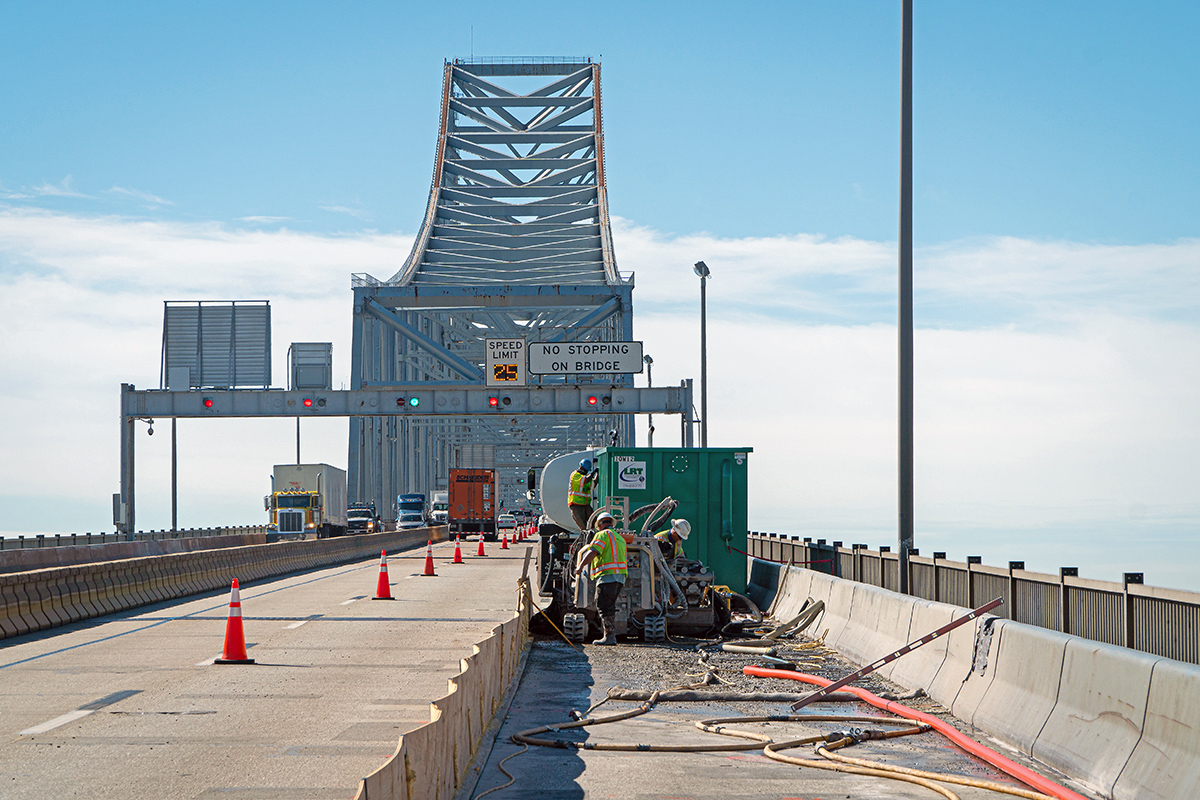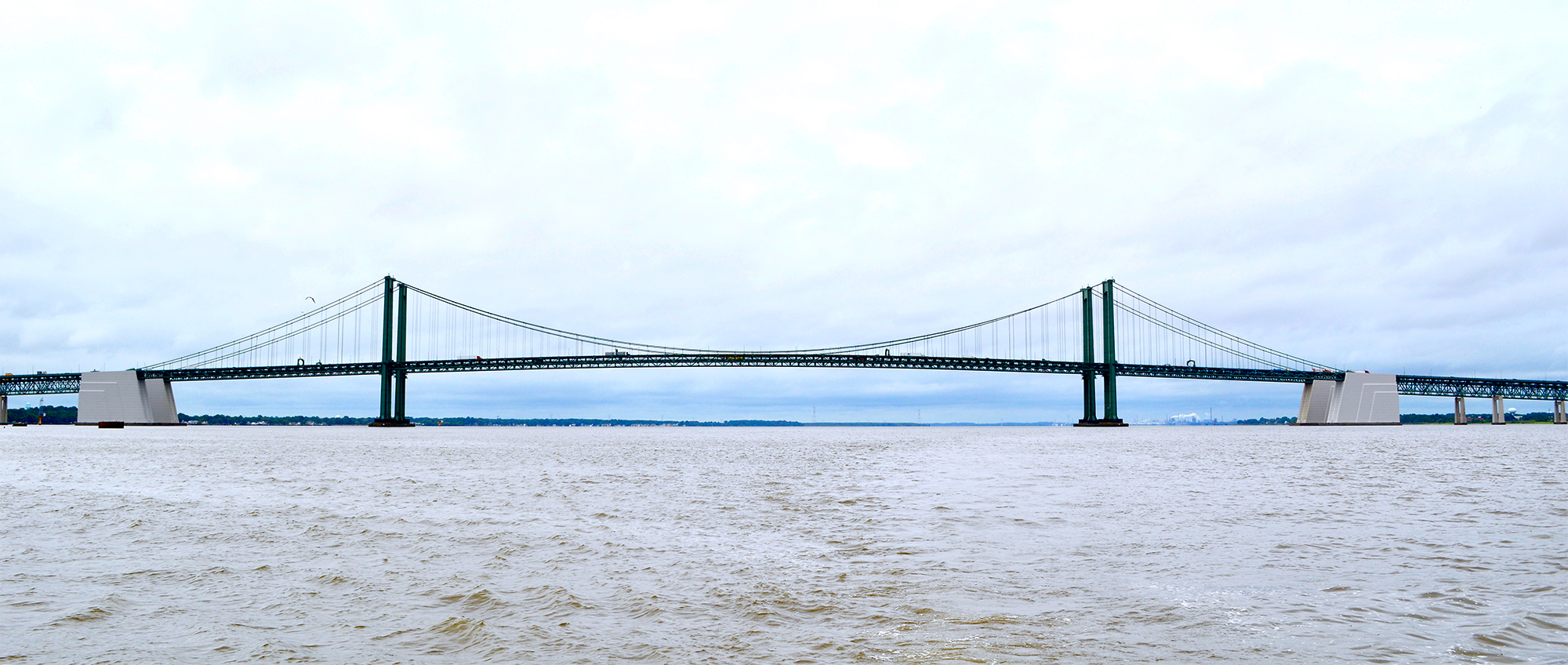Keeping bridges in a state of good repair is essential to keeping the transportation system operating efficiently. All transportation agencies can deploy ultra-high performance concrete (UHPC) to cost-effectively preserve and repair bridges.
UHPC is a fiber-reinforced, cementitious composite material with mechanical and durability properties that far exceed those of conventional concrete materials. This has made it popular for bridge construction, especially for field-cast connections between prefabricated bridge elements (PBE). Preservation and repair (P&R) of bridge infrastructure is a new application of UHPC that offers enhanced performance and durability and improved life-cycle cost over traditional methods. UHPC can be used in situations that normally use conventional concrete or repair mortars, and in some cases those that use structural steel. The primary benefit of UHPC repairs is that they are long lasting and resilient, requiring less maintenance and fewer follow-up repairs than conventional methods. Additionally, some UHPC mixes gain strength rapidly, so for certain repair applications, bridges could be opened to traffic 24 hours after completing the necessary repairs.
Examples of UHPC P&R applications include bridge deck overlays, girder end repairs, expansion joint repairs, PBE construction joint repairs, and column or pile jacketing. Some applications, such as bridge deck overlays and replacing expansion joints with UHPC link slabs, can extend the service life of bridges well beyond that of traditional repair strategies and are more cost-efficient than bridge replacement.
“The cost of UHPC-based solutions has to be thought of holistically,” said Zach Haber, FHWA structural engineer and Every Day Counts round six (EDC-6) team co-lead for UHPC. “While the up-front cost may be higher than conventional solutions, once life-cycle costs are considered, UHPC is a more economical solution. You can fix it numerous times with conventional solutions or once with UHPC.”
 In addition to the Delaware Memorial Bridge, UHPC overlay pilot programs have been initiated on the Commodore Barry Bridge in Pennsylvania, shown here, and the Newport Pell Bridge in Rhode Island. (Credit: FHWA)
In addition to the Delaware Memorial Bridge, UHPC overlay pilot programs have been initiated on the Commodore Barry Bridge in Pennsylvania, shown here, and the Newport Pell Bridge in Rhode Island. (Credit: FHWA)Bridge deck overlays are a relatively new application for UHPC, having only been deployed in the United States since 2016. Currently, about 10 of the country’s bridges have used UHPC overlays and, based on early projects, UHPC overlays are expected to add decades of service life to existing decks, potentially giving a new service life equal to a completely new bridge deck.
In 2019, the Delaware River and Bay Authority (DRBA) undertook a study of options to repair or replace the deck of the New Jersey-bound span of the Delaware Memorial Bridge. Over the past few decades, DRBA spent an ever-increasing amount of money patching the deck and has only seen an average repair service life of 10 years. As the existing deck approached 50 years of service life, DRBA performed a detailed deck condition evaluation and determined that continued deck patching was becoming unsustainable and the deck would likely need to be completely replaced in the next 5 to 15 years. The DRBA study compared a UHPC overlay with a new latex-modified concrete (LMC) overlay and a complete deck replacement.
The study found that while the average life expectancy of LMC overlays is in the range of 10 to 15 years, the material properties of UHPC and performance of field applications to date suggest the service life of a UHPC overlay could be as much as 50 years or more. To account for costs over time, a life-cycle cost analysis compared the options over a common 50-year evaluation period. The results concluded that a UHPC overlay was the most cost-efficient option, estimating a 50-year cost of $80 million, compared to a new precast deck, with a 50-year estimated cost of over $145 million.
 The Delaware Memorial Bridge UHPC deck overlay pilot project commenced on the bridge’s New Jersey-bound span in September 2020. (Credit: Delaware River and Bay Authority)
The Delaware Memorial Bridge UHPC deck overlay pilot project commenced on the bridge’s New Jersey-bound span in September 2020. (Credit: Delaware River and Bay Authority)“A UHPC bridge deck overlay is unique in that it offers bridge agencies an opportunity to significantly extend the service life of their bridge decks without incurring the prohibitive costs of deck replacement,” said Shekhar Scindia, DRBA structural engineer. “Depending on the thickness of the overlay chosen, cost reductions can be anywhere between 25 to 40 percent compared to full deck replacement. Furthermore, by its very nature and characteristics, UHPC overlays present significant advantages over competing alternatives such as LMC overlays. UHPC is at least twice as strong as LMC, its tensile strength is nearly four times that of LMC, and its life expectancy is projected to be as much as four times greater.”
“Moreover, an overlay installation project can be completed with much less disruption to traffic when compared to a full deck replacement project,” said Scindia. “Lower costs, much better structural properties, and less disruption to traffic during installation make a UHPC overlay for bridge deck preservation a significantly attractive choice for bridge agencies.”
—MORE INFORMATION
Read a DRBA press release for more technical details on the Delaware Memorial Bridge UHPC deck overlay pilot project.
To learn more about UHPC for bridge preservation and repair, contact Zach Haber or Mark Leonard, EDC-6 team co-leads, or visit the team’s EDC website.
- Cover
- Ultra-High Performance Concrete—Extending the Life of the Nation’s Bridges
- Strategic Workforce Development in EDC-6
- Michigan Uses Virtual Approach to Capture Public Input on Projects
- Advancing Project Bundling – Old Concept, New Momentum
- EDC Legacy: Creating Network Connections to Keep Traffic Moving Safely
- Learn About Highway Construction
- About Innovator
